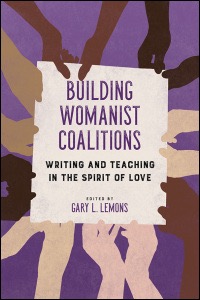womanism
Select an item by clicking its checkbox
This semester I taught the Gospel of Luke for the first time. My class was a seminar style class with seven students who worked diligently through the Lucan text while also engaging various scholars and they ways that these scholars used a variety of methods for interpretation. Since most of ...
Date Reviewed: August 21, 2020
Feminist and womanist-identified educators, students, performers, and poets model the powerful ways that crossing borders of race, gender, class, ...
Over the last generation, the womanist idea—and the tradition blooming around it—has emerged as an important response to separatism, domination, and oppression. Gary L. Lemons gathers a diverse group of writers to discuss their scholarly and personal experiences with the womanist spirit of women of color feminisms.
Feminist and womanist-identified educators, students, performers, and poets model the powerful ways that crossing borders of race, gender, class, sexuality, and nation-state affiliation(s) expands one\'s existence. At the same time, they bear witness to how the self-liberating theory and practice of women of color feminism changes one\'s life. Throughout, the essayists come together to promote an unwavering vein of activist comradeship capable of building political alliances dedicated to liberty and social justice. (From the Publisher)

